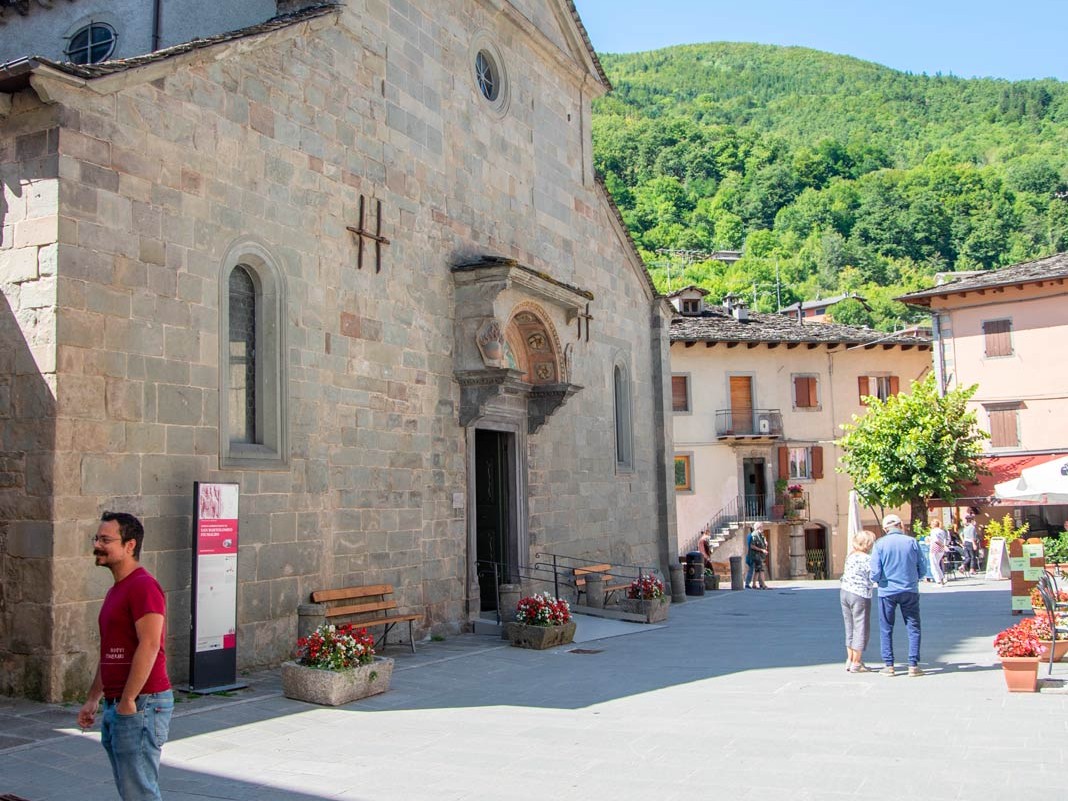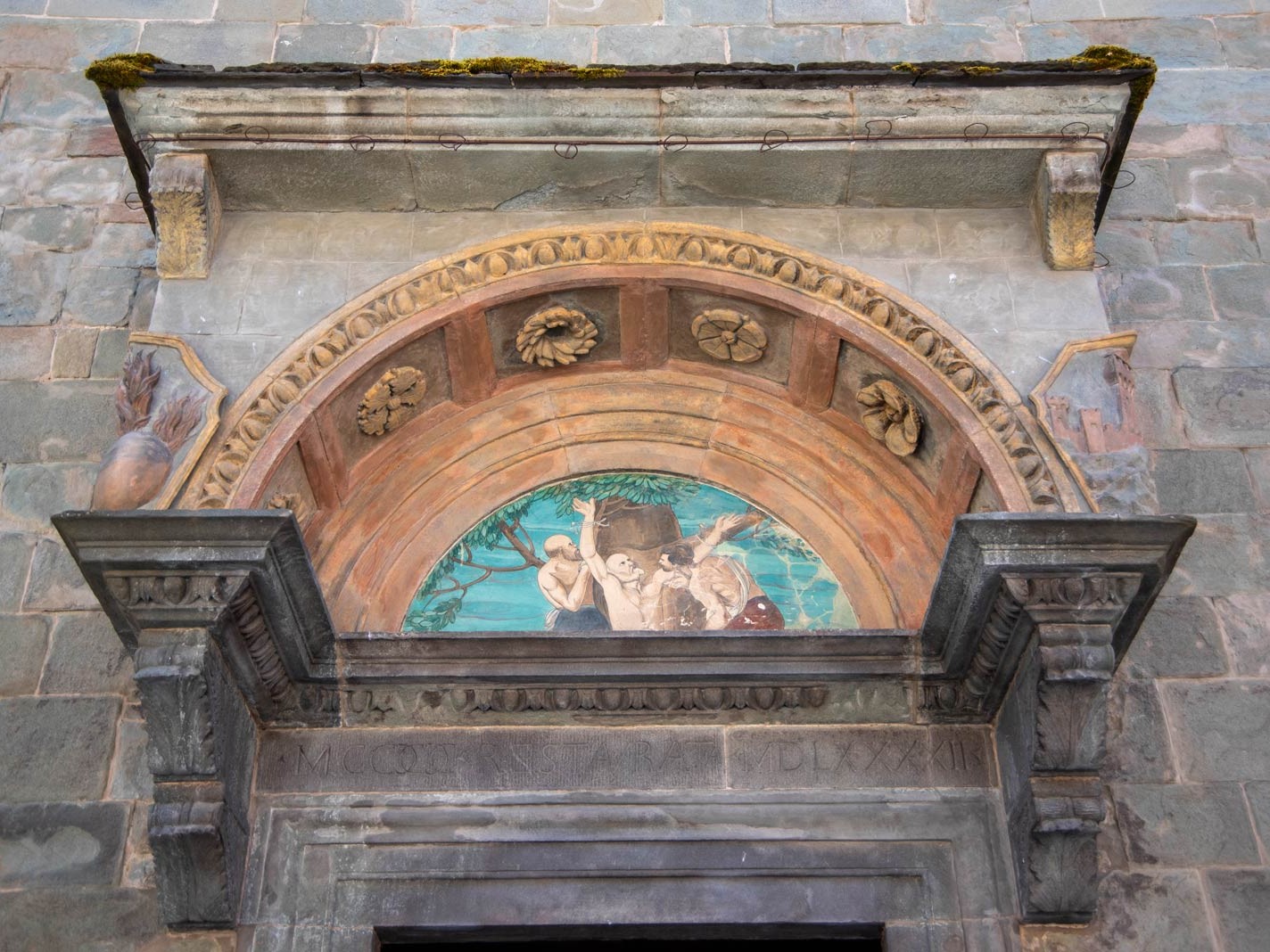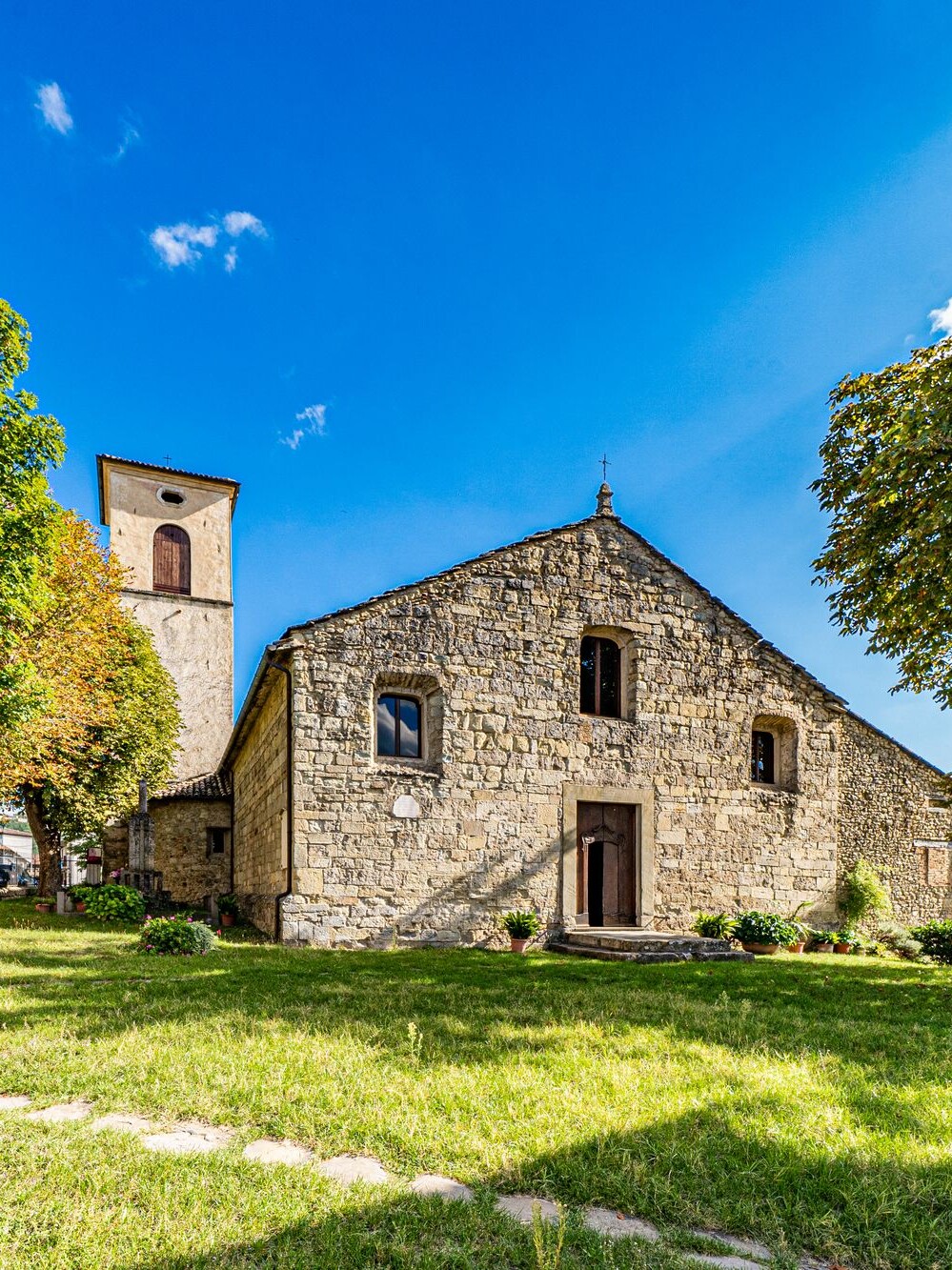This is the main church in Fiumalbo and is very much the heart of this historic village.
The original building, dating back to 1220, was of smaller proportions, with the façade once perpendicular to the current axis. In 1592, the church was rebuilt using material from the old structure, fragments and traces of which still remain both inside and outside the current building. It was during this time that the orientation of the church was changed, and the left side was transformed into the façade, with portal and elegant Renaissance prothyrum (porch) supported by corbels.
Over the centuries it has been renovated and extended several times: in the 17th century the nave was raised and embellished with a richly decorated coffered ceiling; side chapels were added, and adorned with precious altars. There are also several interesting paintings and religious ornaments to be seen inside.
History
Fiumalbo’s main place of worship stands in the main square and is very much the focal point of the old town centre.
The building’s history is quite complex due to the renovation work and extensions that have taken place over the centuries. The original construction, dating back to 1220, was smaller in size, with the façade perpendicular to the current axis. It had a single nave to which a side nave was later added, perhaps around the beginning of the 16th century; built entirely of stone, it had a trussed roof.
Important sculptural remains from the original building, including the original portal and baptismal font, can still be seen today.
Some of these fragments, featuring figures of soldiers, women and knights, as well as decorative elements such as vine shoots, are currently located at the end of the left nave and behind the high altar. Stylistically they can be traced back to the Romanesque sculptor Wiligelmo, but their subject matter is still open to question: the bas-relief – formerly the architrave of the original portal and known as the ‘Battle of Fiumalbo’ – could possibly represent a local episode of war, while others may represent events linked to the Templars or the story of Adelaide.
The church was rebuilt in 1592, using material from the original building; its orientation axis was changed, and the left side was transformed into the façade, with portal and elegant Renaissance prothyrum (porch) supported by corbels.
The three-nave interior is beautifully proportioned, with its arcades of monolithic sandstone columns supporting Tuscan-style capitals. The nave was later raised, and adorned with a richly-carved, coffered ceiling in the 17th-century
The church houses numerous paintings, sculptures and religious ornaments. Among the paintings are two panels dating to the 16th century: one depicting the Virgin Mary and Saints, attributed to Saccaccino, and the other, of the Tuscan school, depicting Christ the Redeemer; and the apse canvas, painted in 1837 by Adeodato Malatesta, which depicts the Martyrdom of St. Bartholomew
Also worthy of note are the two 17th-century wooden altars dedicated to Our Lady of the Rosary and Our Lady of Sorrows, as well as the choir stalls.
The collection of religious ornaments, vestments and silverware is extremely rich and undoubtedly the most important of its kind in the upper Frignano area. The most famous work is a cross made of silver foil, known as the “Fiumalbo cross”, which depicts the Evangelists, the Crucifixion and the Eternal Father; it dates to 1494 and is signed by the Modenese goldsmiths Antonio and Jacopo da Porto. Also of particular interest is a silver statuette of the Madonna, by the Roman artist Borroni, and a magnificent silver processional cross, also from Rome and dated 1747.









